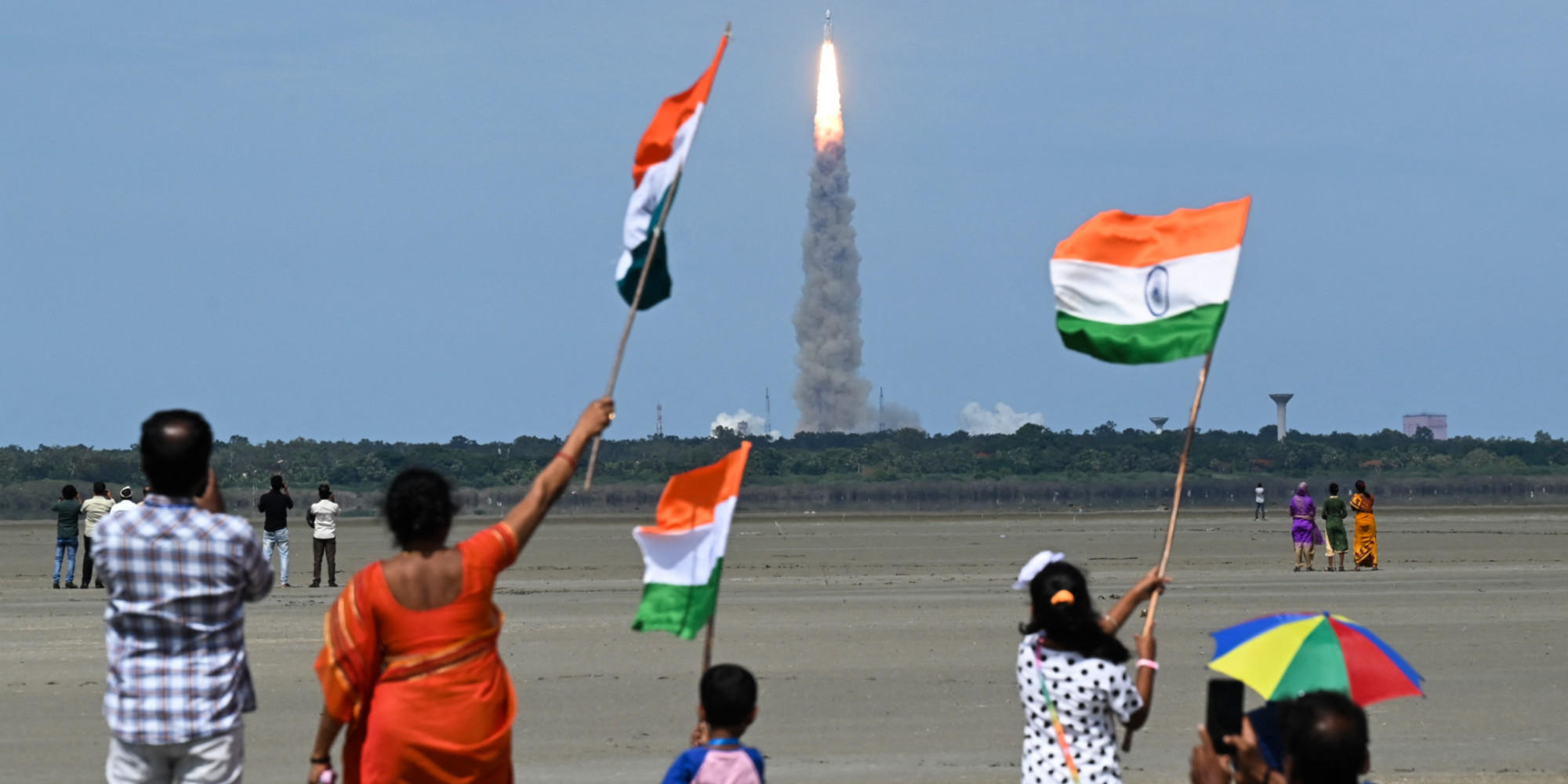India launched an unmanned rocket to the moon on Friday, where it will attempt for the second time to join the very exclusive club of countries having succeeded in a controlled moon landing, according to the live broadcast images. The Chandrayaan-3 (“Mooncraft”) rocket took off from Sriharikota, in the southern state of Andhra Pradesh, to the applause of thousands of enthusiasts.
India could join the club of countries having succeeded in a controlled moon landing
Currently in France, Indian Prime Minister Narendra Modi tweeted that the space mission carries the “hopes and dreams of our country”. If the mission is successful, the most populous country in the world, with more than 1.4 billion people, would join the club that succeeded in a controlled moon landing, which currently consists of only Russia, the United States and the China.
The latest attempt at India’s burgeoning program comes four years after a failed ground crew lost contact shortly before landing on the moon. But this time, the Indian Space Research Organization (ISRO) is hopeful of success and is already planning a future manned mission to the Moon. “We are sure that this mission will be successful and will bring pride and recognition to those who have worked for it,” Anil G. Verma, of India’s main space program engine and component supplier, Godrej & Boyce, told AFP. .
A 14-day mission at a cost of $74.6 million
This 14-day mission represents a cost of 74.6 million dollars (66.5 million euros), according to the media. The goal is to successfully land a rover, a mobile robot, to explore the surface of the Moon. “I am very happy and full of hope,” K. Sivan, head of ISRO, told AFP.
India has become the first Asian country to put a satellite into orbit around Mars
The mission confirms India’s great ambitions in this area. Since the launch of a probe into orbit around the moon in 2008, India’s space program has grown considerably. In 2014, India became the first Asian country to put a satellite into orbit around Mars and three years later launched 104 satellites in a single mission. And by next year, the Asian giant should launch a three-day manned mission in orbit around the earth.
India is also striving to increase its share of the commercial space market in the world, which is currently 2%, thanks to much lower costs than its competitors. According to experts, the country can remain competitive, in terms of prices, by copying and adapting space technologies that already exist, but also by relying on its many highly qualified engineers who are paid much less than their foreign counterparts.
The previous moon landing attempt in 2019, which coincided with the 50th anniversary of American Neil Armstrong’s first moon landing, cost $140 million (€124 million), nearly double the cost of the moon landing. Friday launch. But a price much lower than similar projects from other countries. Prime Minister Narendra Modi, who was present at the Bangalore control center, then consoled the teams and said: “As regards our space program, the best is yet to come”.
